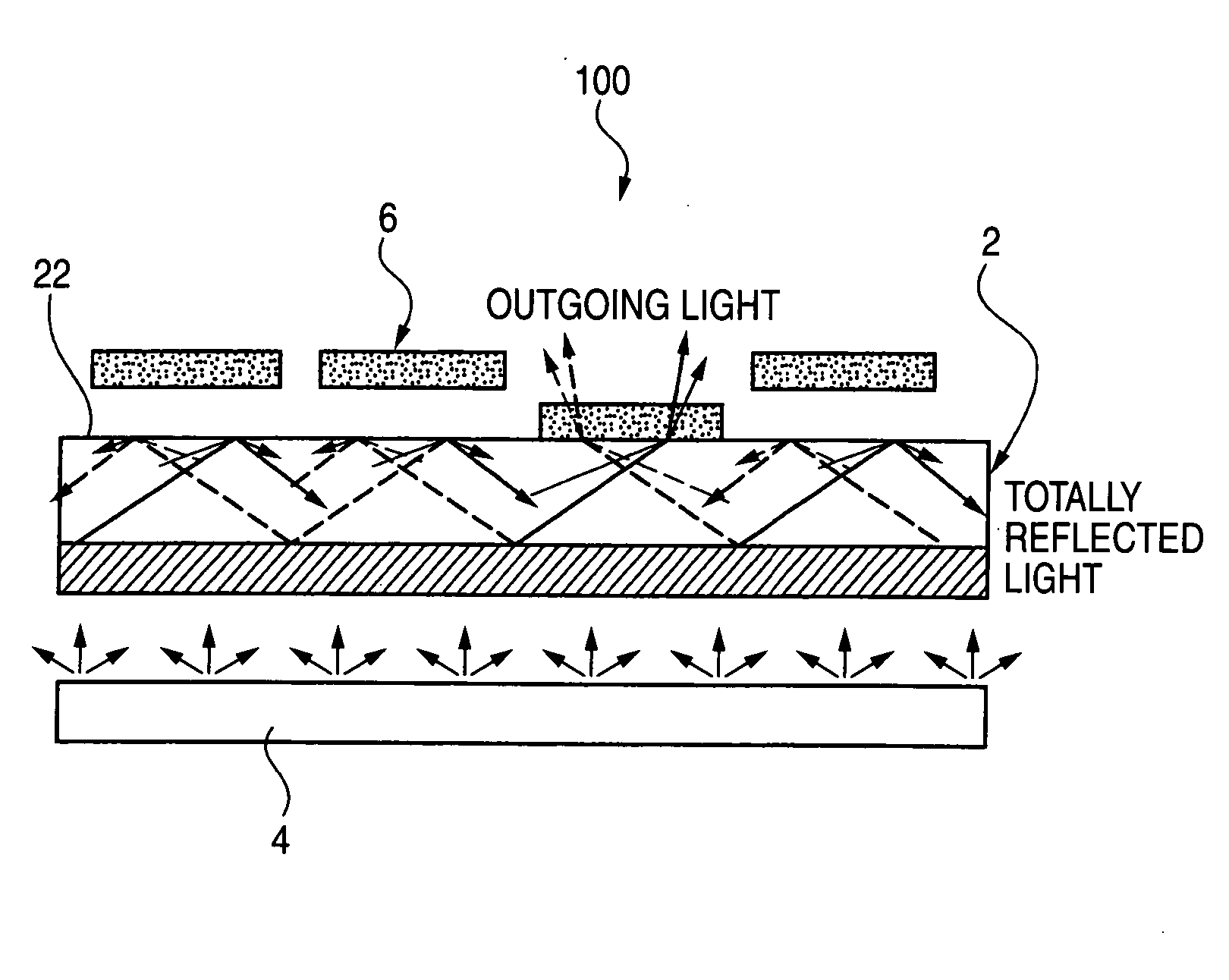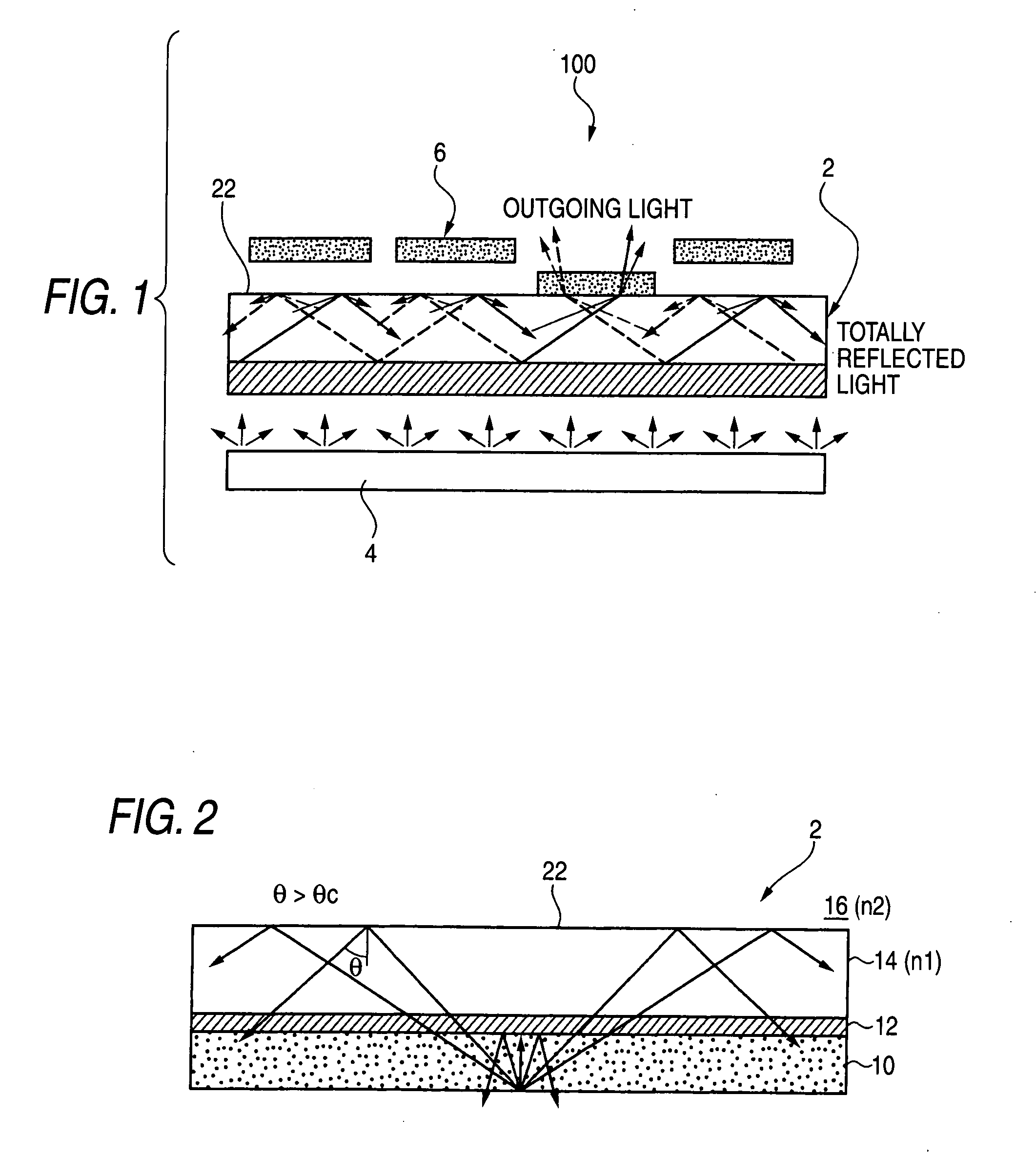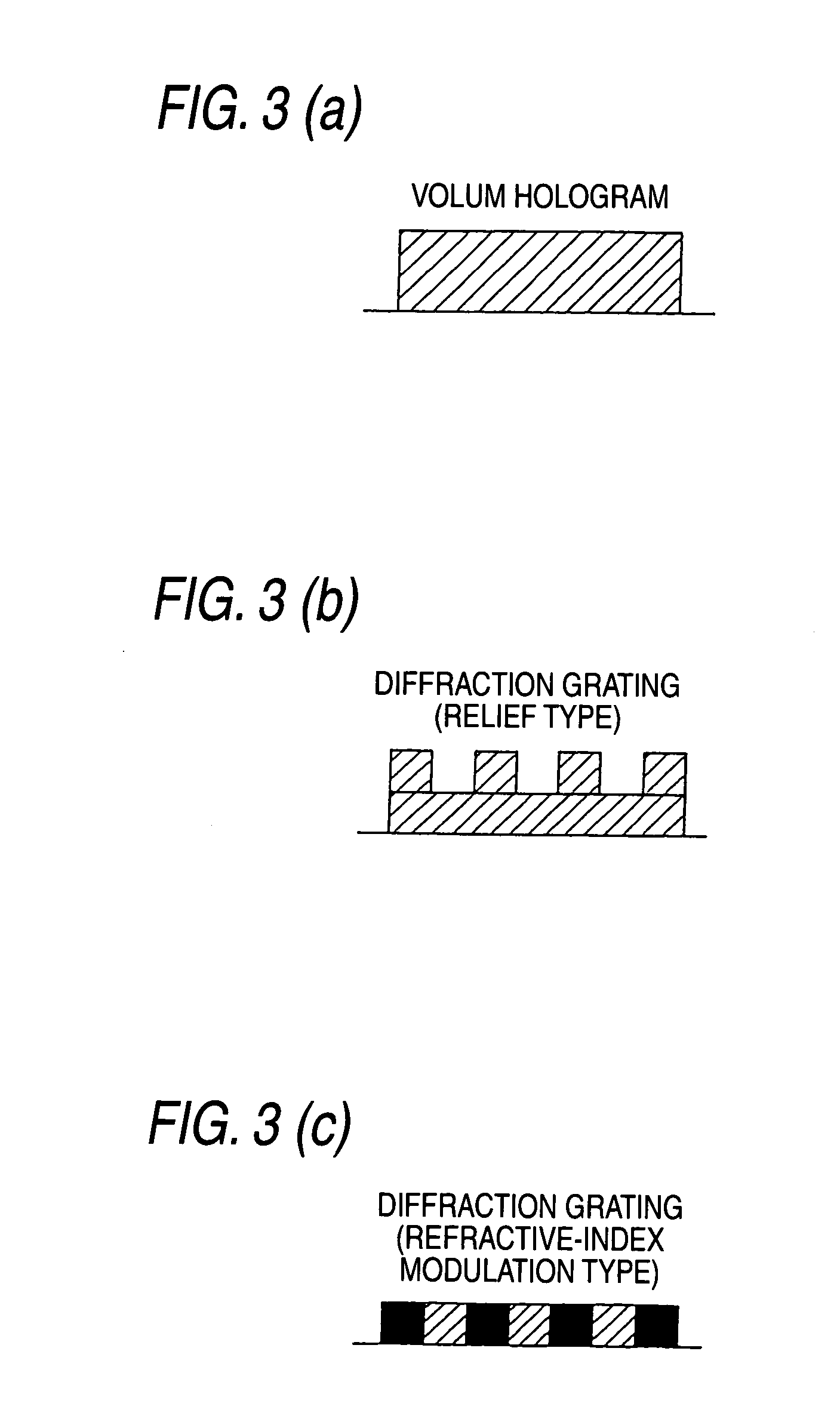Optical modulating device, display, and exposure device
a technology of optical modulating device and exposure device, which is applied in the direction of optics, instruments, optical elements, etc., can solve the problems of low light utilization efficiency, deterioration of image quality, and existing flat display elements described above, so as to prevent a decrease in contrast, improve light utilization efficiency, and reduce cost
- Summary
- Abstract
- Description
- Claims
- Application Information
AI Technical Summary
Benefits of technology
Problems solved by technology
Method used
Image
Examples
second embodiment
the invention constituted by two-dimensionally arranging display elements described above will be explained below by means of FIG. 12 and FIG. 13.
FIG. 12 is a plan view of a flat display element comprising two-dimensionally arranged display elements employing a flexible this film. FIG. 13 is sectional views taken on C-C of FIG. 12; (a) is a view illustrating the OFF state and (b) is a view illustrating the ON state.
As shown in FIG. 12 and FIG. 13, the flat display element 200 according to this embodiment comprises a total-reflection optical member 2 and light-coupling elements 6 disposed over the total reflection plane 22 of the optical member 2 in two-dimensional arrangement with m lines and n rows (m and n are integers). Specifically, signal electrodes 32 transparent to incident light have been arranged in parallel in the row direction so as to constitute n rows over the total reflection plane 22, and scanning electrodes 34 likewise transparent to incident light have been arrang...
fourth embodiment
the invention in which ultraviolet is modulated with the display element of the invention to cause phosphors to show excitation luminescence will be explained below.
FIG. 16 is sectional views illustrating part of an excitation luminescence type flat display element according to this embodiment which includes a flexible thin film and formed thereon the phosphors of the excitation luminescence type flat display element described above; (a) is a view illustrating the OFF state and (b) is a view illustrating the ON state.
As shown in FIG. 16(a), the excitation luminescence type flat display element 400 according to this embodiment has no front-side plate and has phosphors 52a, 52b, and 52c directly formed on the flexible thin film 40. Thus, the constitution and molding step have been simplified, and a further reduction in thickness and a cost reduction are attained. The phosphors 52a, 52b, and 52c are partitioned by a black matrix to thereby enhance the contrast of display images.
In ...
PUM
| Property | Measurement | Unit |
|---|---|---|
| refractive index | aaaaa | aaaaa |
| wavelengths | aaaaa | aaaaa |
| wavelengths | aaaaa | aaaaa |
Abstract
Description
Claims
Application Information
 Login to View More
Login to View More - R&D
- Intellectual Property
- Life Sciences
- Materials
- Tech Scout
- Unparalleled Data Quality
- Higher Quality Content
- 60% Fewer Hallucinations
Browse by: Latest US Patents, China's latest patents, Technical Efficacy Thesaurus, Application Domain, Technology Topic, Popular Technical Reports.
© 2025 PatSnap. All rights reserved.Legal|Privacy policy|Modern Slavery Act Transparency Statement|Sitemap|About US| Contact US: help@patsnap.com



